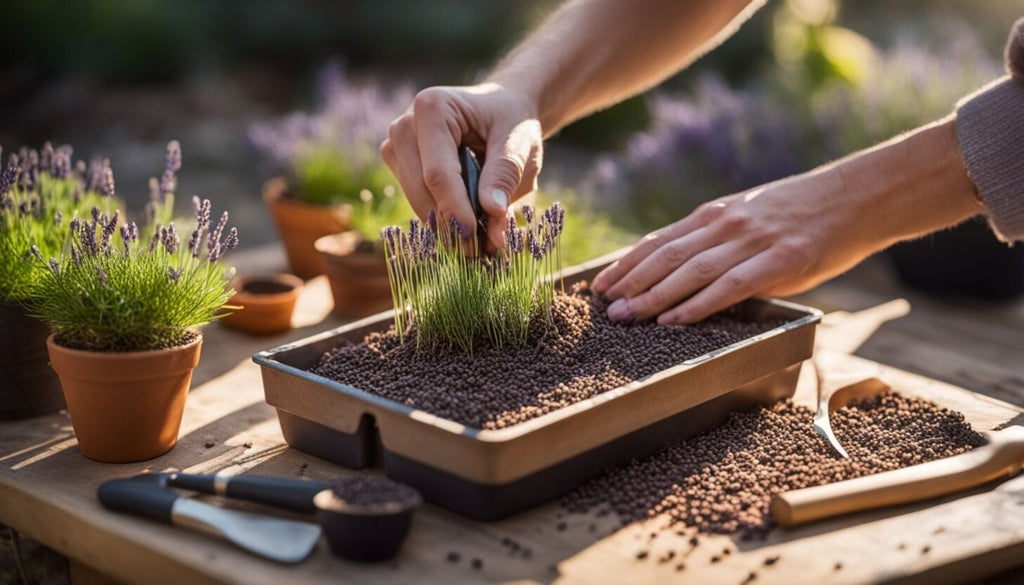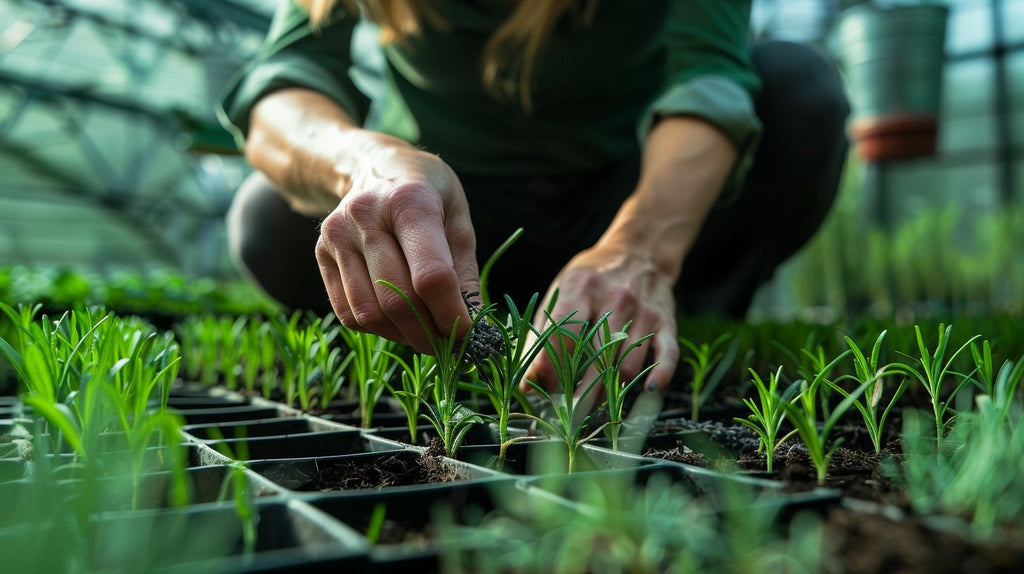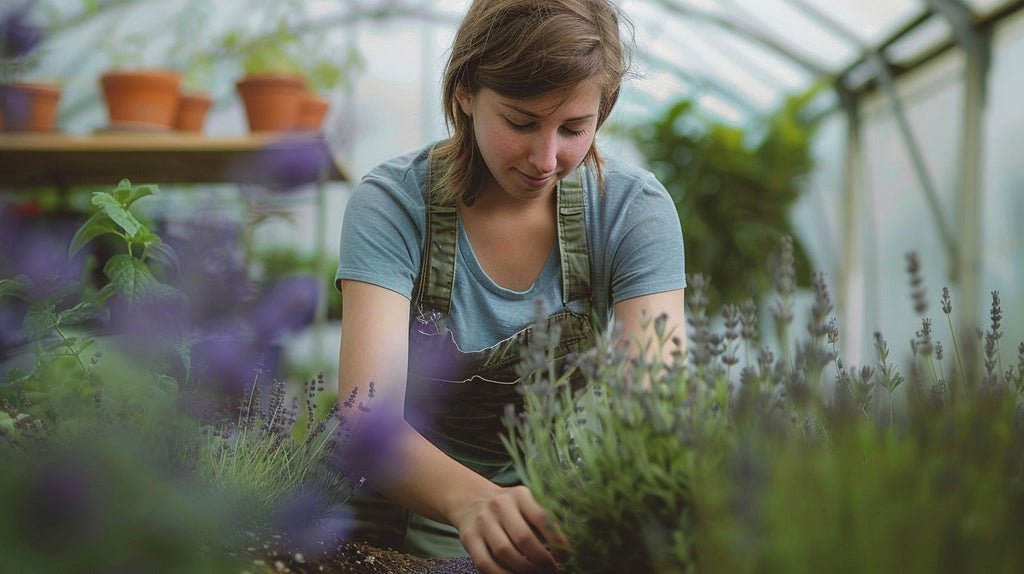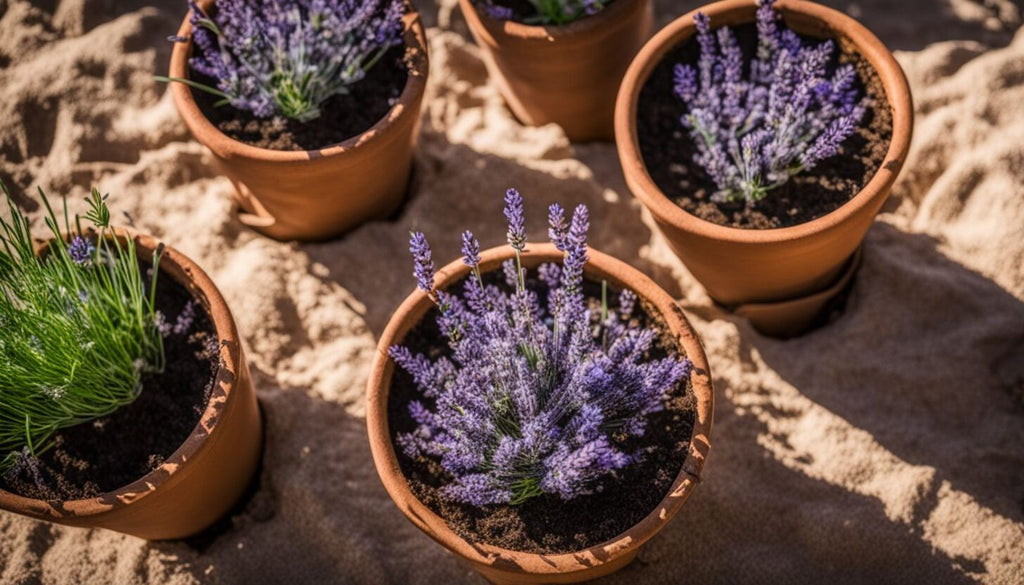How To Grow Lavender From Seed
Growing lavender from seed is a rewarding process that allows gardeners to cultivate this fragrant herb right from the beginning. Whether you're a novice or an experienced gardener, understanding how to grow lavender from seed is crucial for achieving a thriving lavender garden.
This guide will provide you with step-by-step instructions on the best practices to grow lavender from seed, including selecting the right soil, ensuring proper light exposure, and maintaining optimal growing conditions.
By following these tips, you can successfully nurture your lavender seeds into beautiful, aromatic plants that enhance your garden and provide a multitude of uses.
Lavender Seeds vs. Cuttings
Moving from the basics of lavender, let's explore the differences between using seeds and cuttings. Growing lavender from seed is a challenge but can be rewarding. Seeds often require a cold period to wake them up before planting, which is called cold stratification.
They also need light to sprout and should not be buried deep in the soil. Keep in mind that it takes patience; seeds may take up to two years before you see flowers.
On the other hand, cuttings offer a quicker path to growth. By taking a small piece of an existing plant, you can create new lavenders that are exact copies of their parent plants.
This method bypasses the dormancy period required by seeds and results in faster-blooming plants, often within the first year. It's important to note heirloom varieties like 'Hidcote' or 'Munstead' grow well from seed, while hybrids such as 'Provence' or 'Grosso' must be propagated through cuttings for success.
Tools Needed for Growing Lavender From Seed

You'll need certain gardening tools to grow lavender from seed successfully. These help with germination and provide the right conditions for young plants.
- Well-drained soil or potting mix: Lavender loves dry feet, so choose a soil that doesn't hold too much water.
- Seedling cell trays: Use these to plant individual lavender seeds and keep them organized.
- Plastic bag: After cold stratification, you'll use this to create humidity around the seeds.
- Paper plate and moist paper towel: You'll need these for the cold stratification process, which helps awaken dormant seeds.
- Refrigerator: Store your seeds wrapped in a moist paper towel on a paper plate inside a plastic bag in the fridge to mimic winter conditions.
- Full sun location: When seedlings sprout, they need lots of light to grow strong.
- Heating mat: This keeps the soil at a consistently warm temperature, speeding up germination.
- Humidity dome: Place over your seed trays to lock in moisture and warmth.
Steps to Grow Lavender from Seed

Purchase high-quality lavender seeds from a reliable source, choose between direct seeding or indoor sowing, apply cold stratification using the paper plate method, prepare seed trays with a well-draining soil mix, sow seeds shallowly and place trays in a warm, sunny space for germination. Read on to discover more about growing lavender from seed.
Purchasing Seeds From a Reliable Source
Look for trusted nurseries or garden stores to buy your lavender seeds. Seeds from these places are more likely to grow well. They have better germination rates, which means they sprout into plants more often. This step is very important if you want lots of healthy lavender plants.
Make sure the seeds are fresh and come from a good plant variety like English lavender or Lavandin. Fresh seeds with a high germination rate give you a strong start when growing lavender from seed. Buying quality seeds means your time and effort won't be wasted on poor results.
Choosing Direct Seeding or Indoor Sowing
You have two choices to start lavender seeds: direct seeding or indoor sowing. Direct seeding into your garden is easier but often less successful. The seeds may not sprout well because of bad weather, pests, and other outdoor risks.
Indoor sowing is safer for the seeds. You begin this process in pots inside your home 10-12 weeks before the last expected frost. This way, your lavender plants are protected from wind and cold while they grow strong roots. Choose indoor sowing if you want more control and a higher chance of success with your lavender plants!
Applying Cold Stratification: The Paper Plate Method
To apply the cold stratification using the paper plate method:
- Place a dampened paper towel on a plate.
- Spread the lavender seeds evenly on the damp paper towel.
- Cover the seeds with another damp paper towel.
- Put the plate in a sealed plastic bag to retain moisture.
- Place the bag in the refrigerator for 30-40 days.
- Check periodically to ensure the paper towels remain moist.
- After the cold stratification period, sow the seeds as per instructions for successful germination.
Preparing Seed Trays With Soil Mix

After applying cold stratification using the paper plate method, the next step is to prepare seed trays with a suitable soil mix. This will provide the ideal environment for your lavender seeds to germinate and grow successfully. Here's how to do it:
- Select a well-draining soil mix with ingredients such as potting soil, vermiculite, and peat moss. This mix provides the right balance of moisture retention and drainage for lavender seeds.
- Fill the seed trays with the soil mix, ensuring it is loosely packed to allow for air circulation around the seeds.
- Water the soil lightly before sowing the lavender seeds, ensuring that it is evenly moist but not overly saturated.
- Create shallow furrows or depressions in the soil for sowing the seeds, ensuring they are spread out evenly and not overcrowded.
- Gently press the seeds into the soil, but do not cover them completely; lavender seeds require light to germinate, so they should be sown shallowly.
- Mist the surface of the soil lightly after sowing to settle the seeds in place without disturbing them.
Sowing Seeds Shallowly
To sow lavender seeds successfully:
- Prepare seed trays with a well-draining soil mix of sand, perlite, and peat.
- Place the lavender seeds on top of the soil, then cover them with a thin layer of soil no more than 1/8 inch deep.
- Gently press down on the soil to ensure good seed-to-soil contact without burying the seeds too deeply.
- Mist the surface lightly to moisten the soil without disturbing the seeds.
- Place the seed trays in a warm, sunny area where temperatures range between 65-70°F for germination.
- Ensure consistent moisture levels by misting or using a bottom-watering technique when the soil surface feels dry to the touch.
Placing Seed Trays in a Warm, Sunny Space
Place seed trays in a warm, sunny location to encourage rapid sprouting of lavender seeds. Ensure the trays receive consistent sunlight and maintain soil moisture for optimal growth conditions.
It's essential to choose a spot that offers warmth and access to natural light to promote healthy germination of the lavender seeds.
After placing the seed trays in a warm, sunny space, remember to monitor them regularly and ensure they remain moist but not waterlogged. Consistent exposure to warmth and direct sunlight will aid in successful germination and early growth of the lavender seedlings.
Hardening Off After 10-12 Weeks
After 10-12 weeks, harden off the plants by placing them in a protected area for 1-2 weeks.
- Gradually introduce the seedlings to outdoor conditions, starting with a few hours of morning sun.
- Increase their exposure to sunlight and outdoor elements gradually over the next week or two.
- Protect them from strong winds and midday sun during this transition period.
- Bring them indoors if there's a frost or extreme weather forecasted.
- Keep an eye out for signs of stress, such as wilting or discoloration, and adjust their time outdoors accordingly.
Caring for Lavender Seedlings

Lavender seedlings need minimal watering. Soil should dry out 2 inches before watering again. Lavender dislikes wet, humid soil; overwatering leads to root rot. Place in sunny areas for at least 6 hours daily. Lavender blooms within the first or second year, depending on variety and care.
For container gardening, use well-draining sandy soil. Pots should be at least 12-inch diameter for proper growth. Certain cultivars like Munstead and Hidcote are ideal for containers due to their compact size and adaptability characteristics.
When to Transplant Lavender Seedlings
Transplant lavender seedlings outdoors after the last frost, usually around mid-May, in zone 5 gardens. Space lavender plants at least 12-18 inches apart in well-draining soil that gets full sun.
Due to their slow germination, consider starting lavender seeds indoors before transplanting them outside.
Remember, lavender seedlings thrive when transplanted after the threat of frost has passed and should be spaced adequately for proper growth in sunny, well-drained soil.
Can Lavender Be Grown in Containers?
Lavender can thrive in containers with well-draining sandy soil. A Smart Pot 12" is ideal for growing lavender, especially cultivars like Munstead and Hidcote. Good drainage in the containers allows the plants to be portable, making it possible to bring them inside during colder weather. Lavender doesn't require heavy nutrients but prefers light, sandy soil that drains effectively.
Harvesting Lavender

Once your lavender plants have matured and bloomed, it's time to harvest the fragrant flowers for various uses. Lavender should be harvested in the summer months, typically from June to September, on sunny days before the flowers fully open.
Use a sharp pair of scissors or pruning shears to cut the stems, leaving some foliage intact; this encourages regrowth and ensures the plant's vitality. The harvested lavender can then be dried by hanging it upside down in a well-ventilated, dry area for 1-2 weeks before removing the flowers from the stems.
Harvesting lavender is best done in specific weather conditions and times of the day to ensure its quality and fragrance retention. Proper harvesting techniques help in preserving essential oils effectively.
Conclusion
In summary, growing lavender from seed is a rewarding and cost-effective way to add this fragrant herb to your garden. Lavender seeds require careful attention and specific conditions for successful germination, but the process can be incredibly satisfying.
It’s important to provide ample warmth, light, and moisture while also considering whether direct seeding or indoor sowing is best for your situation. By following these steps, you can enjoy the beauty and benefits of lavender in your own backyard.
FAQs
How do I start growing lavender from seed?
To grow lavender from seed, plant the seeds in a peat pot with compost, keep them warm with a growing light or heater, and water them until they germinate.
Can I grow lavender outside in my garden?
Yes, you can grow lavender outdoors! Plant it after your local frost date to avoid cold damage since it's a perennial herb that needs full sun and good drainage.
What other herbs can be planted with lavender?
Lavender grows well with herbs like rosemary and sage because they all thrive in similar conditions, such as xeriscape gardens or areas that require less water.
When should I move my lavender plants outside?
Move your lavender transplants outdoors when they have rooted well in their pots, and there is no risk of frost, which could harm the young plants.
Does lavender take long to grow from seed?
Lavender has a seed dormancy period, so it might take longer to see signs of growth compared to other herbs or vegetables; patience is key!
How should I care for my lavender plant as it grows?
Prune your lavendula angustifolia regularly to help form a strong root system and encourage vegetative propagation for healthier, more robust plants.








